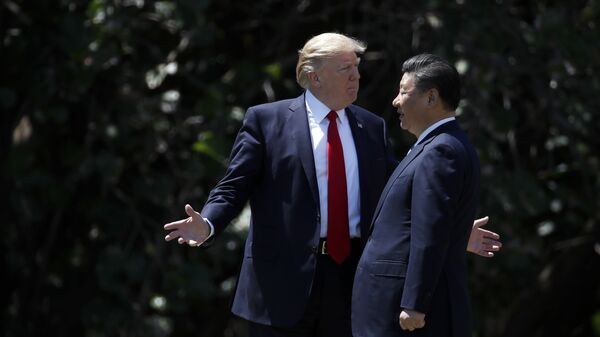Radio Sputnik discussed China's growing economic clout amid the US tariff standoff with Srikanth Kondapalli, a professor in Chinese studies at Jawaharlal Nehru University in New Delhi, India.
READ MORE: China to Go Ahead With Silk Road Amid Trade Row With US — Analyst
Sputnik: To what extent do Trump's US trade policies stand to boost China’s economic influence?
Srikanth Kondapalli: I think the recent tariff hikes by the Trump administration are aimed at the “Made in China 2025” program, which intends to roughly multiply by about 70% the domestic economy of China, and move away, possibly, from US economic influence, number one. Number two, the tariffs are also aimed at bridging the trade deficit that the US has encountered with China in the last decade or so. Although many US companies are working in China and are re-exporting to the US at highly subsidized costs, US tariffs would have a double edge sword and may scuttle the US companies themselves. Number three is that US tariffs appear to be also aimed at the recent intensification of globalization within many exporting countries like China and India. So this is aimed at addressing some of the issues that the US (currently must deal with).
Sputnik: What steps could China undertake if President Trump engages in a full-blown trade war?
Sputnik: What’s your take on Beijing’s recent reduction of some tariffs on imports from certain Asian nations? This must be quite interesting from an Indian perspective as well.
Srikanth Kondapalli: Since the Chinese joined the WTO, they've been a major beneficiary of exports; from $200 billion in 2000, they reached $3-4 trillion in terms of exports and imports. So trade substantially increased because of the WTO entry. This also signifies the Chinese entry to globalization, which includes, of course, the information and communication technology. Multinational companies' establishment in China, a substantial number of these have gone into the Chinese market.
READ MORE: EU Warns US Against Car Tariffs, Response Could Affect $294 Bln in US Exports
This is the follow-up to the Bangkok initiative on triggering free trade proposals, number one. Number two is this is also to address the complaints of many Asian countries with which China has a trade surplus now, trying to also import from these countries. For example India last year had about $84 billion in trade, of which nearly $55 billion trade is in favor of China. In 2010 the Indian President visited Beijing for a reduction in trade imbalanced by China importing more from India. So recently the Chinese ambassador Mr. Luo Zhaohui had announced 29 items of pharmaceuticals and higher medical items imported by China and also the rice and other core imports from India. So this is in tune with the argument that China should reduce the trade deficits from the Asian countries.
The views and opinions expressed in this article are those of the contributor and do not necessarily reflect Sputnik's position.



